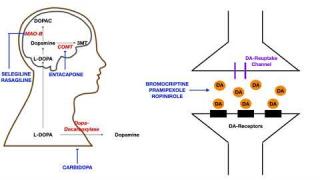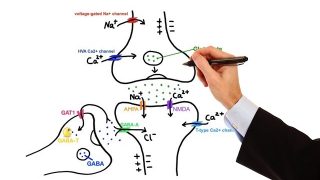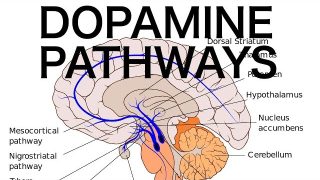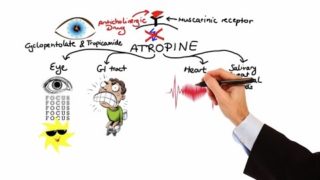Diuretics – Mechanism of Action of Different Classes of Diuretics, Animation
(USMLE topics) Pharmacology of diuretics: Mechanism of action of carbonic anhydrase inhibitors, osmotic diuretics, loop diuretics, thiazides , and potassium-sparing diuretics. This video is available for instant download licensing here https://www.alilamedicalmedia.com/-/galleries/all-animations/urinary-system-videos/-/medias/b1eb96d4-a43e-4fdb-af86-dd0149a1e37d-diuretics-narrated-animation
Voice by: Ashley Fleming
©Alila Medical Media. All rights reserved.
Support us on Patreon and get early access to videos and free image downloads: patreon.com/AlilaMedicalMedia
All images/videos by Alila Medical Media are for information purposes ONLY and are NOT intended to replace professional medical advice, diagnosis or treatment. Always seek the advice of a qualified healthcare provider with any questions you may have regarding a medical condition
Diuretics are commonly used to treat primary hypertension and edema. Changes in body fluid and electrolytes induced by diuretics can also be therapeutic for some other conditions.
Sodium and water are filtered in the glomerular capsule of nephrons, then reabsorbed back to the blood at various sites along the renal tubule. Different classes of diuretics prevent sodium reabsorption, and thus increase sodium loss, at different sites, by different mechanisms.
Carbonic anhydrase inhibitors inhibit the enzyme carbonic anhydrase, which is required for reabsorption of bicarbonate in the proximal tubule. Most of sodium lost at this early stage is reclaimed further down the renal tubule. Increased delivery of sodium to the collecting duct increases its reabsorption at this site through epithelial sodium channels, in exchange for a greater potassium loss, and may cause hypokalemia. Loss of bicarbonate also affects acid-base balance, producing metabolic acidosis. Carbonic anhydrase inhibitors are rarely prescribed for cardiovascular diseases; they are mainly used in the treatment of glaucoma.
Osmotic diuretics, such as mannitol, promote water loss directly through osmosis. Mannitol is effective in lowering intracranial pressure in patients with head injury, and lowering intraocular pressure in acute glaucoma.
Loop diuretics inhibit the sodium/potassium/chloride cotransporter in the thick ascending limb of the loop of Henle. These are very powerful diuretics because this transporter not only reabsorbs a large share of sodium, but is also responsible for the osmolarity gradient in the medulla that enables the collecting duct to concentrate urine. Side effects include electrolyte imbalances, metabolic alkalosis, hypovolemia due to excessive loss of water, loss of hearing due to inhibition of a similar transporter in the inner ear, and gout due to interference with transporters involved in urate secretion.
Thiazide diuretics inhibit the sodium/chloride cotransporter in the distal tubule, which reabsorbs about 5% of the sodium load, and are not as powerful as loop diuretics. However, thiazides also have a vasodilation effect by a still poorly understood mechanism. Thiazides are first-line drugs for uncomplicated hypertension and most effective for heart failure prevention.
Unlike loop diuretics, thiazides reduce calcium loss in urine and can be used to prevent formation of new calcium kidney stones. This is because lower intracellular sodium induced by thiazides leads to higher calcium reabsorption mediated by sodium/calcium exchanger located on the basolateral membrane. Other side effects are similar to those of loop diuretics and include hypokalemia, metabolic alkalosis and hyperuricemia.
Potassium-sparing diuretics act mainly in the collecting duct. Here, sodium reabsorbs through epithelial sodium channels, ENaC, then sodium/potassium pump, in exchange for potassium loss. Sodium influx into cells creates a negative lumen potential, which drives reabsorption of chloride and excretion of potassium and hydrogen. Both ENaC and sodium/potassium pump are induced by aldosterone.
Potassium-sparing diuretics include aldosterone receptor antagonists and direct ENaC inhibitors. They are called potassium-sparing because they do not increase potassium loss, unlike all other diuretics acting upstream. Instead, they reduce potassium loss because reduced sodium reabsorption decreases the electrogenic exchange for potassium. Aldosterone antagonists also directly inhibit the sodium/potassium pump, reducing potassium loss.
Because the collecting duct reabsorbs only a small amount of sodium, this class of drugs has only a mild diuretic effect. They are commonly used in conjunction with thiazide or loop diuretics to prevent hypokalemia. Side effects include hyperkalemia, metabolic acidosis, and effects associated with inhibition of aldosterone.
Diuretics – Mechanism of Action of Different Classes of Diuretics, Animation
Other Videos You Might Like:
Subscribe
Login
63 Comments
Newest




